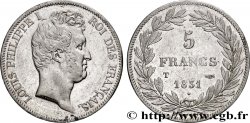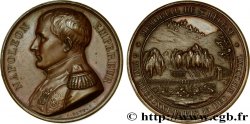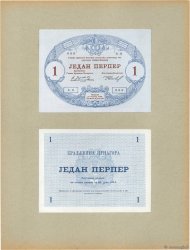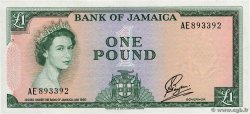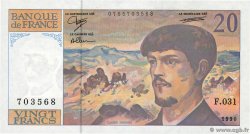E-auction 326-242302 - fme_412382 - LUIGI FILIPPO I Médaille du roi Clodion le Chevelu
Devi Sign-in ed essere un offerente approvato fare un'offerta, Login per fare offerte. Conti sono soggetti ad approvazione e di approvazione sono raggiunti entro 48 ore. Non aspettare fino al giorno di una vendita si chiude per registrarti.Confermando la tua offerta su questo oggetto ti impegni ad un contratto legalmente vincolante per l'acquisto di questo prodotto e fare clic su «offerta» costituisce accettazione dei termini di utilizzo de e-auctions cgb.fr.
Offerta deve essere collocato in euro gli importi interi vendita only.The si chiuderà al momento sulla descrizione dell'oggetto, eventuali offerte pervenute al sito dopo l'orario di chiusura non verranno eseguite. Volte transmition possono variare e le offerte potrebbero essere respinto se si attende per gli ultimi secondi. Per ulteriori informazioni ckeck le FAQ.
SENZA COSTI PER GLI ACQUIRENTI.
SENZA COSTI PER GLI ACQUIRENTI.
| Valutazione : | 100 € |
| Prezzo : | 31 € |
| Offerta maxima : | 40 € |
| Data di fine vendita : | 15 luglio 2019 18:18:30 |
| partecipanti : | 4 partecipanti |
Tipo : Médaille du roi Clodion le Chevelu
Data: 428-448
Nome della officina / città: France
Metallo : bronzo
Diametro : 52 mm
Asse di coniazione : 12 h.
Incisore CAQUÉ Armand Auguste (1795-1881)
Peso : 62 g.
Commenti sullo stato di conservazione:
Intéressante médaille avec agréable patine brune et brillante
N° nelle opere di riferimento :
Diritto
Titolatura diritto : CLODION - ROI DE FRANCE.
Descrittivo diritto : Buste de Clodionà droite, couronnée et barbu, les cheveux longs.
Rovescio
Titolatura rovescio : CLODION DIT LE CHEVELU / 2 EME ROI / (...) MORT 448.
Descrittivo rovescio : Légende en 17 lignes.
Commento
Intéressante médaille signée Caqué et datée 1840. Elle fait partie de la série de 73 médailles en bronze au module de 51mm gravées de 1835 à 1840 par Caqué.
Armand Auguste Caqué, né à Saintes (Charente-Inférieure) le 24 janvier 1795 et mort à Paris le 31 décembre 1881 à l'âge de 86 ans, est un sculpteur, graveur et médailleur français. Graveur officiel de l'empereur Napoléon III. Ses médailles sont signées CAQUÉ F et quelquefois sa signature est suivie de la mention "Graveur de S. M. l'Empereur".
Clodion dit le Chevelu, né vers 390 et mort vers 450, est un chef des Francs saliens, un des peuples germaniques qui constituent la ligue des Francs. Il est essentiellement connu pour être le plus ancien roi de la dynastie des Mérovingiens dont l’existence soit certaine. Clodion n'est connu que par deux brèves mentions, ce qui rend difficile l'établissement d’une biographie par les historiens. Vers le milieu du Ve siècle, Clodion pénètre avec son armée en territoire romain et s'empare du Cambrésis et de l'Artois méridional. Il fonde ainsi un petit royaume franc dont héritera Clovis Ier et qui sera l'embryon du futur royaume de France.
Interesting medal signed Caqué and dated 1840. It is part of the series of 73 bronze medals with a module of 51mm engraved from 1835 to 1840 by Caqué. Armand Auguste Caqué, born in Saintes (Charente-Inférieure) on January 24, 1795 and died in Paris on December 31, 1881 at the age of 86, is a French sculptor, engraver and medalist. Official engraver of the Emperor Napoleon III. His medals are signed CAQUÉ F and sometimes his signature is followed by the mention \\\"Engraver of HM the Emperor\\\". Clodion called the Hairy, born around 390 and died around 450, is a leader of the Salian Franks, one of the Germanic peoples who constitute the League of the Franks. He is essentially known for being the oldest king of the Merovingian dynasty whose existence is certain. Clodion is known only from two brief mentions, which makes it difficult for historians to establish a biography. Around the middle of the 5th century, Clodion entered Roman territory with his army and seized Cambrésis and southern Artois. He thus founded a small Frankish kingdom that was inherited by Clovis I and which would become the embryo of the future kingdom of France.
Armand Auguste Caqué, né à Saintes (Charente-Inférieure) le 24 janvier 1795 et mort à Paris le 31 décembre 1881 à l'âge de 86 ans, est un sculpteur, graveur et médailleur français. Graveur officiel de l'empereur Napoléon III. Ses médailles sont signées CAQUÉ F et quelquefois sa signature est suivie de la mention "Graveur de S. M. l'Empereur".
Clodion dit le Chevelu, né vers 390 et mort vers 450, est un chef des Francs saliens, un des peuples germaniques qui constituent la ligue des Francs. Il est essentiellement connu pour être le plus ancien roi de la dynastie des Mérovingiens dont l’existence soit certaine. Clodion n'est connu que par deux brèves mentions, ce qui rend difficile l'établissement d’une biographie par les historiens. Vers le milieu du Ve siècle, Clodion pénètre avec son armée en territoire romain et s'empare du Cambrésis et de l'Artois méridional. Il fonde ainsi un petit royaume franc dont héritera Clovis Ier et qui sera l'embryon du futur royaume de France.
Interesting medal signed Caqué and dated 1840. It is part of the series of 73 bronze medals with a module of 51mm engraved from 1835 to 1840 by Caqué. Armand Auguste Caqué, born in Saintes (Charente-Inférieure) on January 24, 1795 and died in Paris on December 31, 1881 at the age of 86, is a French sculptor, engraver and medalist. Official engraver of the Emperor Napoleon III. His medals are signed CAQUÉ F and sometimes his signature is followed by the mention \\\"Engraver of HM the Emperor\\\". Clodion called the Hairy, born around 390 and died around 450, is a leader of the Salian Franks, one of the Germanic peoples who constitute the League of the Franks. He is essentially known for being the oldest king of the Merovingian dynasty whose existence is certain. Clodion is known only from two brief mentions, which makes it difficult for historians to establish a biography. Around the middle of the 5th century, Clodion entered Roman territory with his army and seized Cambrésis and southern Artois. He thus founded a small Frankish kingdom that was inherited by Clovis I and which would become the embryo of the future kingdom of France.








 Segnalare un errore
Segnalare un errore Stampate la pagina
Stampate la pagina Condividi mia selezione
Condividi mia selezione Fai una domanda
Fai una domanda Consegnare / vendere
Consegnare / vendere
 Descrittivo
Descrittivo
